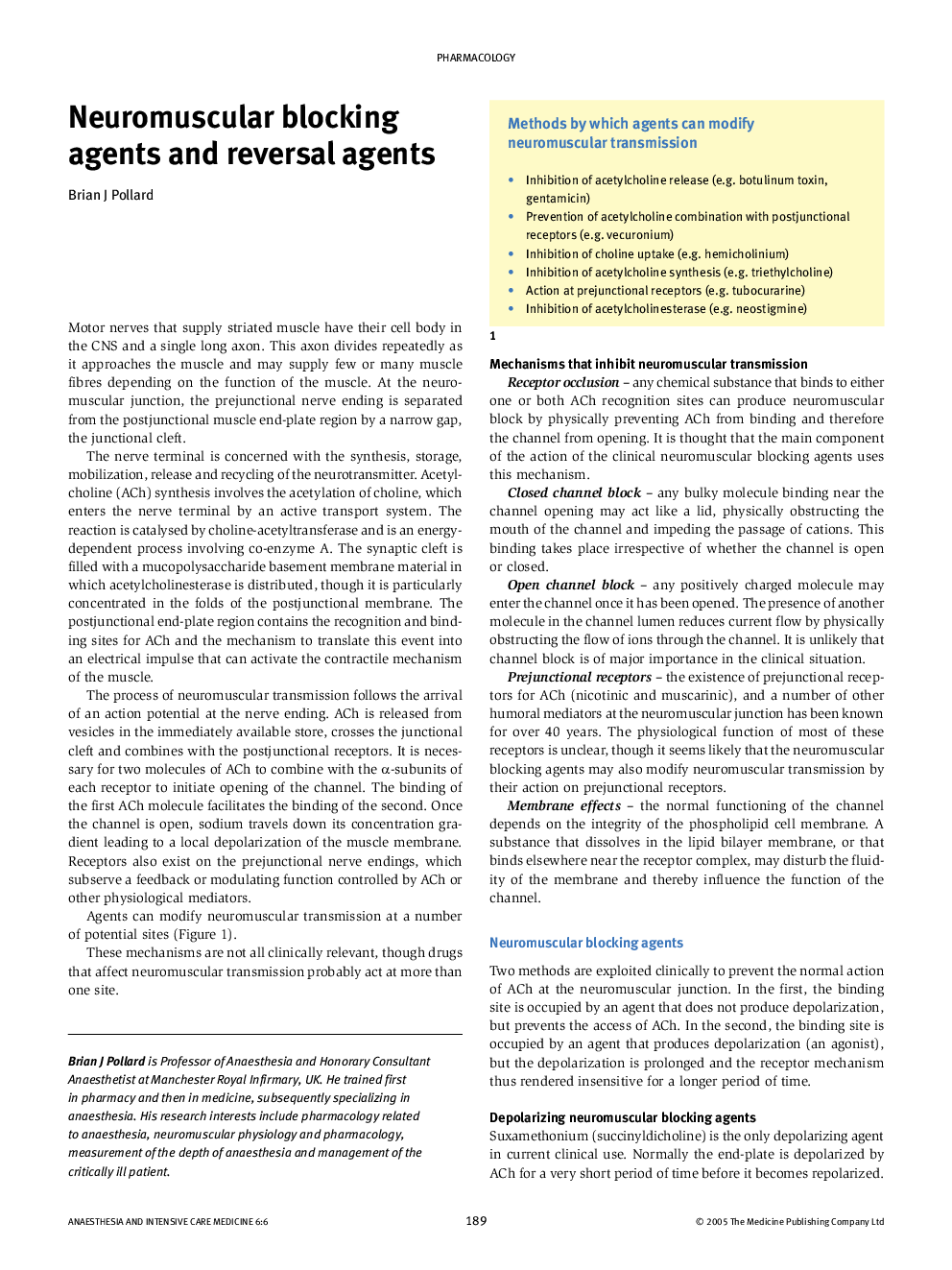| کد مقاله | کد نشریه | سال انتشار | مقاله انگلیسی | نسخه تمام متن |
|---|---|---|---|---|
| 9089877 | 1148727 | 2005 | 4 صفحه PDF | دانلود رایگان |
عنوان انگلیسی مقاله ISI
Neuromuscular blocking agents and reversal agents
دانلود مقاله + سفارش ترجمه
دانلود مقاله ISI انگلیسی
رایگان برای ایرانیان
کلمات کلیدی
VecuroniummivacuriumAtracurium - آتراتاوریومjunction - اتصالEdrophonium - ادروپونیمrocuronium - راکورونیمSuxamethonium - سکسمانتریومAgent - عاملNeuromuscular - عضلانی عضلانیPharmacology - فارماکولوژی یا داروشناسیBlocking - مسدود کردنMechanism - مکانیسم یا سازوکارNeostigmine - نستمینگpancuronium - پانکورونیوم
موضوعات مرتبط
علوم پزشکی و سلامت
پزشکی و دندانپزشکی
بیهوشی و پزشکی درد
پیش نمایش صفحه اول مقاله

چکیده انگلیسی
The neuromuscular blocking agents in routine clinical use may be classed as depolarizing or nondepolarizing. Suxamethonium is the only example of the depolarizing group and is an agonist at the neuromuscular receptor. It has the most rapid onset and the shortest duration of action, though it has a number of important unwanted side-effects. Its duration is prolonged by deficiency or absence of plasma cholinesterase. The nondepolarizing group act by competitive antagonism of acetylcholine at the receptor sites. The long acting agents (e.g. pancuronium) are little used in modern anaesthesia. The intermediate acting agents (atracurium, cisatracurium, vecuronium, rocuronium) are currently the most popular. They are versatile and predictable in action and recovery. Mivacurium is the only short acting agent available and is broken down by plasma cholinesterase. A reversal agent is required to restore neuromuscular function by biasing the equilibrium within the neuromuscular junction back towards acetylcholine. Reversal agents function by inhibiting acetylcholinesterase in a reversible fashion. Edrophonium is the shortest acting and only suitable for reversing a light to moderate block. Neostigmine is the most reliable. It is necessary to give an antimuscarinic agent at the same time to counteract parasympathomimetic side-effects. New reversal agents that actively bind relaxant molecules are under development but it seems unlikely that any new neuromuscular blocking agents will appear in the near future.
ناشر
Database: Elsevier - ScienceDirect (ساینس دایرکت)
Journal: Anaesthesia & Intensive Care Medicine - Volume 6, Issue 6, 1 June 2005, Pages 189-192
Journal: Anaesthesia & Intensive Care Medicine - Volume 6, Issue 6, 1 June 2005, Pages 189-192
نویسندگان
Brian J Pollard,